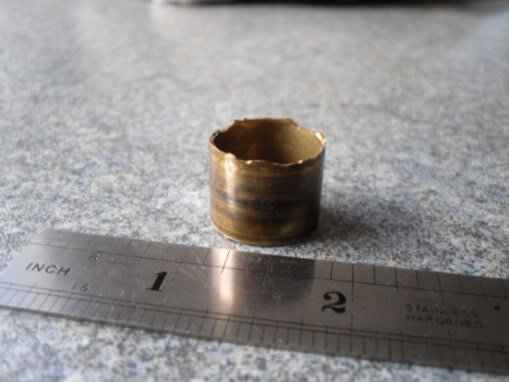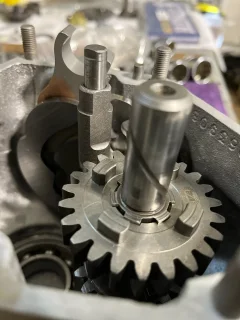I ended up removing the gearbox form the bike (thank you
@marshg246 for the tips on how to do so) and decided to disassemble and inspect the gearbox myself. First off, it does have the original "Portugal" layshaft bearing. So clearly this was an exercise worth doing. Secondly, I wanted to confirm that first gear was slipping / was not properly engaging. I think the evidence of first gear slipping is pretty compelling, please see picture below of the layshaft first and second gears:
Of course the question now is why is first gear slipping? I think I know why, and I am hoping someone can confirm or debunk my theory. I noted when I stripped the gearbox that the kick start shaft seemed to have a lot of end float. I foolishly did not measure it, but it was obviously way above spec. One thing I am not sure about is were layshafts shimmed from the factory? Or is shimming the layshaft something that is only done to compensate for the width of the replacement for the "Portugal" layshaft bearing? I think it is highly likely that the inner cover on my gearbox has not been opened since it left the factory and there were no shims present.
I did notice that the Index plunger appears to be be working correctly. There was also some other general wear, but nothing that stood out to me as being particularly bad. That, said once I get a better idea of what is going on with the first gear slippage, I will do a closer inspection of the remaining parts.
Thank you!



